Indian Vipassana meditation teacher Anagarika Munindra (1915-2003) played a pivotal role in transmission of Buddhism from East to West. He was a significant teacher for many notable meditation teachers, including Joseph Goldstein, Sharon Salzberg, Dipa Ma, Kamala Masters & Surya Das. Munindra highlighted simplicity & ease. Joseph Goldstein says he must have repeated thousands of times, “Be simple & easy. Take things as they come.”
Quotes here from Munindra come from LIVING THIS LIFE FULLY, by Mirka Knaster.
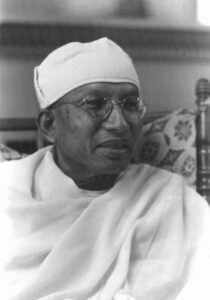 “Everything is meditation in this practice, even while eating, drinking, dressing, seeing, hearing, smelling, tasting, touching, thinking. Whatever you are doing, everything should be done mindfully, dynamically, with totality, completeness, thoroughness. Then it becomes meditation, meaningful, purposeful. It is not thinking, but experiencing from moment to moment, living from moment to moment, without clinging, without condemning, without judging, without evaluating, without comparing, without selecting, without criticizing—choiceless awareness.
“Everything is meditation in this practice, even while eating, drinking, dressing, seeing, hearing, smelling, tasting, touching, thinking. Whatever you are doing, everything should be done mindfully, dynamically, with totality, completeness, thoroughness. Then it becomes meditation, meaningful, purposeful. It is not thinking, but experiencing from moment to moment, living from moment to moment, without clinging, without condemning, without judging, without evaluating, without comparing, without selecting, without criticizing—choiceless awareness.
“Meditation is not only sitting; it is a way of living. It should be integrated with our whole life. It is actually an education in how to see, how to hear, how to smell, how to eat, how to drink, how to walk with full awareness. To develop mindfulness is the most important factor in the process of awakening.”
* * * * *
“Death I don’t mind. Every moment we are dying. Everything is impermanent. Who is dying? There is nobody dying. It is just a process. This is merely a law of nature… everything in nature is arising & vanishing. There is nothing to be afraid of. In death also, smiling you can go. Every moment we are dying. Once you are acquainted with this, then it is simple.”
* * * * *
“Unpleasant feelings are most prominent to us because, when we experience pleasant feelings, we don’t mind. But when we experience the 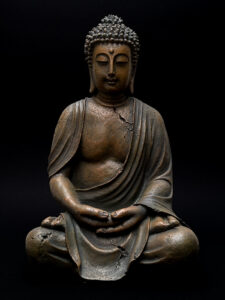 unpleasant feeling, we don’t like it & we condemn. We have to observe it. We have to penetrate it. We have to pierce through it. We have to understand it. When you keep the mind there, then you will see that it is not static; it is a process, and afterward, it disappears. But don’t expect it to come or to go. If you expect, then you have to be aware of the expecting mind. Not clinging, not condemning, not hoping. Whatever comes up, see the thing as it is, at this moment, without liking or disliking. If you like it, you feed it with greed; if you dislike it, you feed it with hatred. Both ways, the mind is unbalanced, unhealthy, unsound. [The] object itself is neither good nor bad. It is our mind which attributes the color—it is good or it is bad. We are influenced by that & then reaction comes. Be gentle with everything that comes up. Keep the mind in a balanced state. We are following the middle path. Be fully alert.”
unpleasant feeling, we don’t like it & we condemn. We have to observe it. We have to penetrate it. We have to pierce through it. We have to understand it. When you keep the mind there, then you will see that it is not static; it is a process, and afterward, it disappears. But don’t expect it to come or to go. If you expect, then you have to be aware of the expecting mind. Not clinging, not condemning, not hoping. Whatever comes up, see the thing as it is, at this moment, without liking or disliking. If you like it, you feed it with greed; if you dislike it, you feed it with hatred. Both ways, the mind is unbalanced, unhealthy, unsound. [The] object itself is neither good nor bad. It is our mind which attributes the color—it is good or it is bad. We are influenced by that & then reaction comes. Be gentle with everything that comes up. Keep the mind in a balanced state. We are following the middle path. Be fully alert.”
* * * * *
“Mind by nature has no color. When it is colored with greed, we call it “greedy mind.” When anger arises, at that moment, it is called “angry mind.” If there is no mindfulness, mind is influenced by this anger. Anger has the nature to pollute the mind; it creates poison. But mind is not anger; anger is not mind. Mind is not greed; greed is not mind. Please remember this. Mind has no nature of liking or disliking. “Mind” means “knowing faculty,” “cognizing faculty.” …Mindfulness is a different thing: alertness, awareness, remembering, heedfulness. It means not to forget, just to be aware, to be mindful of what is going on. When you are asked to walk on a one-bamboo bridge over the river, you have to be so careful on every step. Once you forget, there is 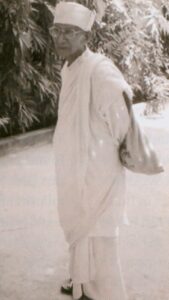 every possibility of falling down. If you lose your mindfulness, you will hurt yourself or kill yourself. So, in reality, mindfulness means not to forget what is going on at the present moment – in thought, in word, in deed.”
every possibility of falling down. If you lose your mindfulness, you will hurt yourself or kill yourself. So, in reality, mindfulness means not to forget what is going on at the present moment – in thought, in word, in deed.”
* * * * *
‘If we know how to live at this present moment, mindfully & with virtue (sila), then the next moment comes all right & we build our future. Working in this way, walking on the middle path, leads you toward liberation, total freedom from the cycle of birth & death.”
MORE LINKS:
Listen to some of his recorded Dharma talks on Dharma Seed
Barre Center for Buddhist Studies interview with Mirka Knaster, author of Living this Life Fully
 This pithy quote from the Dhammapada encapsulates our task when we practice the Buddha’s teachings. It might be a short quote, but it seems like a lot that we have to keep track of when we undertake the practice.
This pithy quote from the Dhammapada encapsulates our task when we practice the Buddha’s teachings. It might be a short quote, but it seems like a lot that we have to keep track of when we undertake the practice. happiness.”
happiness.”
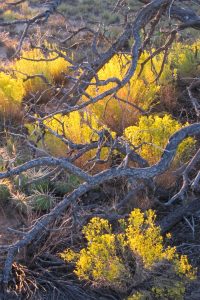
 To live in this world
To live in this world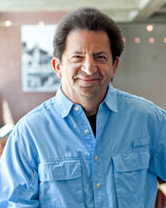 I meditate because when I was younger it was all the rage.
I meditate because when I was younger it was all the rage.
 One way we might regard the meditative process is as a kind of scientific field work. The field of study for this investigation is the terrain of our own body & mind, and our main research tool is mindfulness. Our objective in doing this investigation is to learn as much as we can about both the world within us & the world around us.
One way we might regard the meditative process is as a kind of scientific field work. The field of study for this investigation is the terrain of our own body & mind, and our main research tool is mindfulness. Our objective in doing this investigation is to learn as much as we can about both the world within us & the world around us. attitude when we sit down to meditate? Can we trust our ability to meet each moment with attitude that some teachers call: “don’t know mind”. Zen master Suzuki Roshi called this “beginner’s mind“. He once said: “In the beginner’s mind there are many possibilities, but in the expert’s there are few.”
attitude when we sit down to meditate? Can we trust our ability to meet each moment with attitude that some teachers call: “don’t know mind”. Zen master Suzuki Roshi called this “beginner’s mind“. He once said: “In the beginner’s mind there are many possibilities, but in the expert’s there are few.”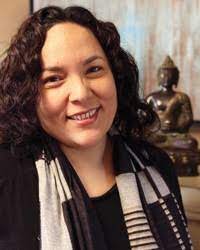 Going for a walk-in nature calls us to pause & listen to the whispers of our ancestors calling us to remember. I remember our beloved late teacher Thich Nhat Hanh saying,
Going for a walk-in nature calls us to pause & listen to the whispers of our ancestors calling us to remember. I remember our beloved late teacher Thich Nhat Hanh saying,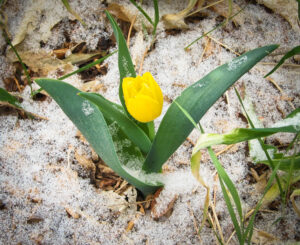 greatest practitioners of letting go & trusting this cycle of life as the greatest teacher of impermanence. Each day, we honor our teachers who have come before us, as we take in Nature’s natural rhythm of letting go through connecting with our elemental relatives. By witnessing this nature’s flow, which remains ever so fleeting, with each drop of rain, or a gust of wind, or touch of sunshine, all transitioning immediately upon noticing.
greatest practitioners of letting go & trusting this cycle of life as the greatest teacher of impermanence. Each day, we honor our teachers who have come before us, as we take in Nature’s natural rhythm of letting go through connecting with our elemental relatives. By witnessing this nature’s flow, which remains ever so fleeting, with each drop of rain, or a gust of wind, or touch of sunshine, all transitioning immediately upon noticing. That is all we have, this moment with the world. It will not last, because nothing lasts. Entropy, mortality, extinction: the entire plan of the universe consists of losing, and no matter how much we find along the way, life amounts to a reverse savings account in which we are eventually robbed of everything. Our dreams and plans and jobs and knees and backs and memories; the keys to the house, the keys to the car, the keys to the kingdom, the kingdom itself: sooner or later, all of it drifts into the Valley of Lost Things.
That is all we have, this moment with the world. It will not last, because nothing lasts. Entropy, mortality, extinction: the entire plan of the universe consists of losing, and no matter how much we find along the way, life amounts to a reverse savings account in which we are eventually robbed of everything. Our dreams and plans and jobs and knees and backs and memories; the keys to the house, the keys to the car, the keys to the kingdom, the kingdom itself: sooner or later, all of it drifts into the Valley of Lost Things. In his teachings, the Buddha again & again pointed to the importance of seeing impermanence – the changing nature of all conditioned phenomena. In a well known sutta, he stated that living just one day clearly seeing impermanence, is more important than living a hundred years without seeing impermanence . Deeply recognizing impermanence, in our own lived experience, is described as a potential doorway to liberation – the deepest peace, the unconditioned, nibbana.
In his teachings, the Buddha again & again pointed to the importance of seeing impermanence – the changing nature of all conditioned phenomena. In a well known sutta, he stated that living just one day clearly seeing impermanence, is more important than living a hundred years without seeing impermanence . Deeply recognizing impermanence, in our own lived experience, is described as a potential doorway to liberation – the deepest peace, the unconditioned, nibbana.
 A NEW YEAR… A NEW DAY… A NEW MOMENT. This is our ‘time.’ How we fill our time over the years, days and moments is the ‘story’ – the essence of our life.
A NEW YEAR… A NEW DAY… A NEW MOMENT. This is our ‘time.’ How we fill our time over the years, days and moments is the ‘story’ – the essence of our life.
 From all of us here at The Mountain Hermitage… we deeply appreciate you and send boundless gratitude for your interest, support of and participation in our various Dharma offerings.
From all of us here at The Mountain Hermitage… we deeply appreciate you and send boundless gratitude for your interest, support of and participation in our various Dharma offerings.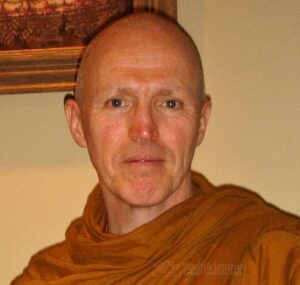 When we attend to our values, we might begin by reflecting on the Buddha’s exhortation: ‘Even as a mother protects with her life her child, her only child, so with a boundless heart should one cherish all living beings.’ This is not just because kindness is universal & simple, but because it focuses us directly on the quality of heart that has enabled us to survive & grow. We are born as empathic beings – we’re hard-wired for it with mirror-neurons in our brains – and our success as a species has come from being able to operate as a collective. So a focus on goodwill brings us out of the divisions of nationality, social status, and political systems to connect more directly with a value that can include others. Development of that empathic sense is an aspect of Buddhist ‘mind-cultivation’, and its aim is to develop that sense in a widening field to include all other living beings. The more inclusive the cosmos, the greater its validity. And the awakening fact is that this cultivation is also deeply enjoyable….
When we attend to our values, we might begin by reflecting on the Buddha’s exhortation: ‘Even as a mother protects with her life her child, her only child, so with a boundless heart should one cherish all living beings.’ This is not just because kindness is universal & simple, but because it focuses us directly on the quality of heart that has enabled us to survive & grow. We are born as empathic beings – we’re hard-wired for it with mirror-neurons in our brains – and our success as a species has come from being able to operate as a collective. So a focus on goodwill brings us out of the divisions of nationality, social status, and political systems to connect more directly with a value that can include others. Development of that empathic sense is an aspect of Buddhist ‘mind-cultivation’, and its aim is to develop that sense in a widening field to include all other living beings. The more inclusive the cosmos, the greater its validity. And the awakening fact is that this cultivation is also deeply enjoyable…. materials that come from the Earth & are finite. Given this capacity, our responsibility has to be to develop values that will include & support as much of the cosmos as possible. Values: you name them – how about generosity, goodwill, truthfulness, reliability? It’s not difficult to access the resources of our human nature; putting them into practice takes work, but it is innately fulfilling. On a wider scale, giving value to harmony in our total environment will surely help us to strengthen & enrich our own lives. It will take us out of the sense of being an isolated, competitive self & into the harmony of being part of the cosmos.
materials that come from the Earth & are finite. Given this capacity, our responsibility has to be to develop values that will include & support as much of the cosmos as possible. Values: you name them – how about generosity, goodwill, truthfulness, reliability? It’s not difficult to access the resources of our human nature; putting them into practice takes work, but it is innately fulfilling. On a wider scale, giving value to harmony in our total environment will surely help us to strengthen & enrich our own lives. It will take us out of the sense of being an isolated, competitive self & into the harmony of being part of the cosmos. “Everything is meditation in this practice, even while eating, drinking, dressing, seeing, hearing, smelling, tasting, touching, thinking. Whatever you are doing, everything should be done mindfully, dynamically, with totality, completeness, thoroughness. Then it becomes meditation, meaningful, purposeful. It is not thinking, but experiencing from moment to moment, living from moment to moment, without clinging, without condemning, without judging, without evaluating, without comparing, without selecting, without criticizing—choiceless awareness.
“Everything is meditation in this practice, even while eating, drinking, dressing, seeing, hearing, smelling, tasting, touching, thinking. Whatever you are doing, everything should be done mindfully, dynamically, with totality, completeness, thoroughness. Then it becomes meditation, meaningful, purposeful. It is not thinking, but experiencing from moment to moment, living from moment to moment, without clinging, without condemning, without judging, without evaluating, without comparing, without selecting, without criticizing—choiceless awareness.  unpleasant feeling, we don’t like it & we condemn. We have to observe it. We have to penetrate it. We have to pierce through it. We have to understand it. When you keep the mind there, then you will see that it is not static; it is a process, and afterward, it disappears. But don’t expect it to come or to go. If you expect, then you have to be aware of the expecting mind. Not clinging, not condemning, not hoping. Whatever comes up, see the thing as it is, at this moment, without liking or disliking. If you like it, you feed it with greed; if you dislike it, you feed it with hatred. Both ways, the mind is unbalanced, unhealthy, unsound. [The] object itself is neither good nor bad. It is our mind which attributes the color—it is good or it is bad. We are influenced by that & then reaction comes. Be gentle with everything that comes up. Keep the mind in a balanced state. We are following the middle path. Be fully alert.”
unpleasant feeling, we don’t like it & we condemn. We have to observe it. We have to penetrate it. We have to pierce through it. We have to understand it. When you keep the mind there, then you will see that it is not static; it is a process, and afterward, it disappears. But don’t expect it to come or to go. If you expect, then you have to be aware of the expecting mind. Not clinging, not condemning, not hoping. Whatever comes up, see the thing as it is, at this moment, without liking or disliking. If you like it, you feed it with greed; if you dislike it, you feed it with hatred. Both ways, the mind is unbalanced, unhealthy, unsound. [The] object itself is neither good nor bad. It is our mind which attributes the color—it is good or it is bad. We are influenced by that & then reaction comes. Be gentle with everything that comes up. Keep the mind in a balanced state. We are following the middle path. Be fully alert.” every possibility of falling down. If you lose your mindfulness, you will hurt yourself or kill yourself. So, in reality, mindfulness means not to forget what is going on at the present moment – in thought, in word, in deed.”
every possibility of falling down. If you lose your mindfulness, you will hurt yourself or kill yourself. So, in reality, mindfulness means not to forget what is going on at the present moment – in thought, in word, in deed.”